Jaffna and Anuradhapura, Sri Lanka: March 26, 2024
- Cecilia Clark

- Mar 26, 2024
- 4 min read
Updated: Apr 12
When we drove over the causeway yesterday on our way to Delft, I asked to stop so I could take photographs of the fishing nets and the many birds on both sides. Last night Indika suggested that he and Thushara pick us up early tomorrow to take us to the Jaffna Causeway which was just a 10-minute drive away. So, we did. We arrived at the causeway pre sunrise when it was cool, the water was calm, and Sri Lankans were using the causeway to run or walk alone or in groups. It was lovely. The moon was setting on the west side of the causeway and the sun was coming up on the east. The nets in a circle are for prawn farming while the other nets are for sea cucumber farming.
We went back to the hotel for a late breakfast and to relax until noon. Anuradhapura was the next place on our itinerary. Since the weather had been so hot, Indika said it would be better to arrive there in the late afternoon when we wouldn't burn our feet from walking barefoot on hot paving stones.
Our stay in Jaffna was at Jetwing Mahesh Bhawan which was more like a B&B in a neighborhood than a city hotel. Very nice staff, good food, and comfortable room. This is where we had another example of Geoffrey Bawa's Outside/Inside approach to design. Our bedroom was comfortably air conditioned, but the garden area in the bathroom was partially open to the elements. The openness let in the morning birdsong as well as the outside temperature.
On the road to Anuradhapura we stopped at a roadside stand for a King Coconut drink. The inner liquid is coconut water. She cut a small amount of the top off so the coconut can be tipped up like drinking from a cup. She gave us a straw. Once the liquid is finished, she took a small slice off the bottom of the coconut which can be used to spoon out the inner jell left once the coconut is cut in half. It was very refreshing and except for our straws all parts were completely organic and recyclable.
We arrived in Anuradhapura late afternoon. Anuradhapura was the first capitol of Sri Lanka. It was a great monastic center as well as a royal capital. It was sacked in the 10th century motivating the monks to move from Anuradhapura to Polonnaruwa. Our first stop was at the Main Alms Hall (refectory) the center of the Abhayagiri Monastery. Constructions from the 1st century BC have been discovered at this Refectory. The kitchen provided daily alms to the monks who sought sanctuary here. The 5th century Chinese traveler monk, Fa-Hien, noted that 5,000 monks received their daily alms. The stone trough (19 meters long) is a rice canoe that could hold more than 5,000 portions of rice. Nearby is another stone trough which would have been filled with vegetables and curries. Rows of stone seats with curved backs were occupied by monks while they were eating. As a monk finished eating, each alms bowl was cleaned and used for the next wave of hungry monks. Also at the Refectory is a stone sundial, storerooms, and underground conduits to bring water to the building.
Sri Lankan Buddhist temple entrances always have a carved granite moonstone (a Sri Lankan art form), guard stones (usually male with a naga (a 7-headed cobra behind the guard's figure) installed on either side of the moonstone, and balustrades (railings) often carved in the shape of a dragon. The moonstone's rings show how a life should progress from worldly to enlightenment to achieve nirvana (the smallest ring). This moonstone is dated to the 7th - 8th century AD.
We attended the evening ceremony at Ruwanwelisaya Dagoba or The Great Stupa. Ruwanwelisaya, the oldest stupa on the island, was built in 140 BC to revive Buddhism in the country. The stupa is 388 ft/188 m tall with a diameter of 295 ft/90 m at the base and a circumference of 950 ft/3117m.
Buddhists from all over the world come to worship this sacred stupa since it enshrines many of Buddha's relics and may have been visited by Lord Buddha. This part of the sacred, ancient city of Anuradhapura lives.
Even though it was early evening, the paved areas were still quite hot for bare feet. A narrow grate with cool water running over the grates to cool hot feet runs across the paved sidewalk. Most people walk on the carpeted areas to avoid the hot stones.
From the Ruwanwelisaya Dagoba we walked, barefooted, to the Sri Maha Bodhi. This is the tree (ficus religiosa) that grew from the cutting brought to Sri Lanka by Indian Emperor Asoka's daughter, the Buddhist nun Sangamitta, who landed in Sri Lanka carrying a sapling of the Bohdi tree which was then brought to Anuradhapura and planted at this site in 236 BC. This is a cutting of a southern branch of the original Sacred Bodhi Tree under which Buddha attained enlightenment.
This tree is a national treasure. It has a team of arborists who report monthly to the President of Sri Lanka. It is fenced and guarded and this was only one of two places where we had to go through metal detectors and I had my bag searched. During the civil war, it was a target of terrorists. Indika had all three of us blessed at this tree. The visible evidence of the blessing is a string wrapped around our right wrist which needed to remain on for at least 24 hours.
We spent the next two nights in Sigiriya.






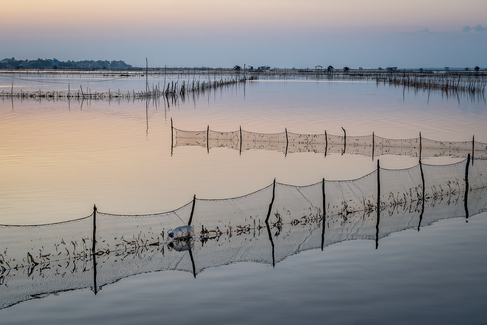



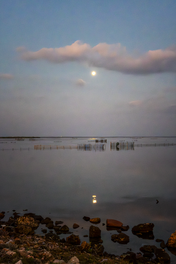











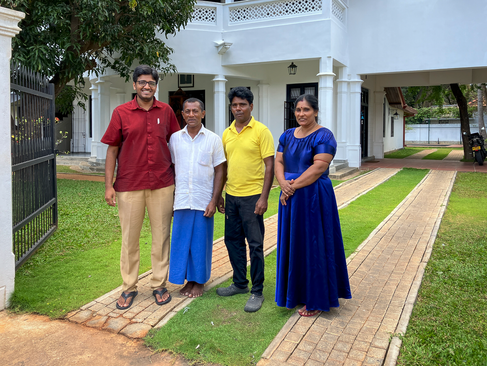



















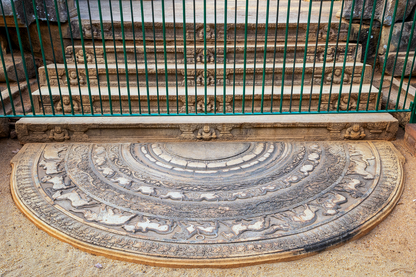









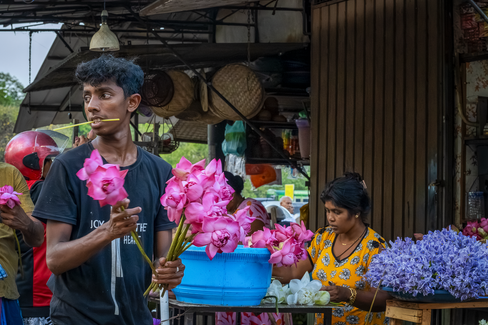







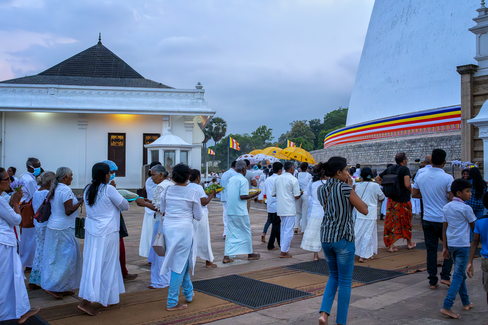











Comments